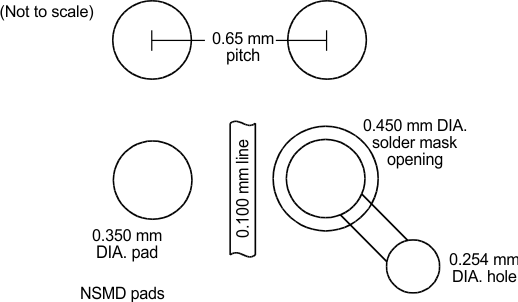SPRAA99C March 2008 – May 2021 AM3351 , AM3352 , AM3354 , AM3356 , AM3357 , AM3358 , AM3359 , AM4372 , AM4376 , AM4377 , AM4378 , AM4379 , OMAPL138B-EP , TMUX646
2.2 Conductor Width/Spacing
Figure 2-4 presents some design considerations based on commonly used PCB design rules. Conventionally, the pads are connected by wide copper traces to other devices or to plated through holes (PTH). As a rule, the mounting pads must be isolated from the PTH. Placing the PTH interstitially to the land pads often achieves this.
 Figure 2-4 PCB
Design Considerations (Conventional)
Figure 2-4 PCB
Design Considerations (Conventional)